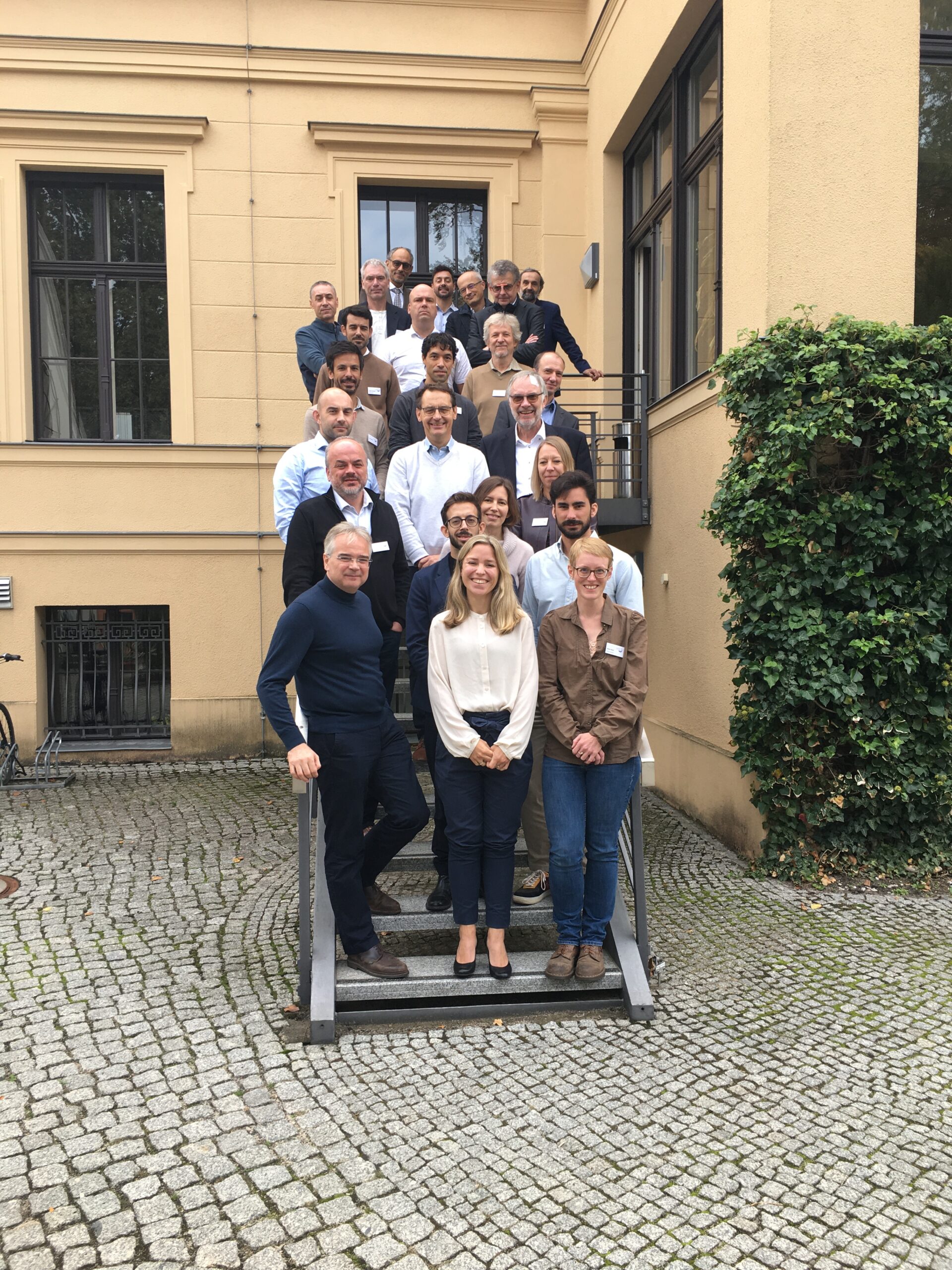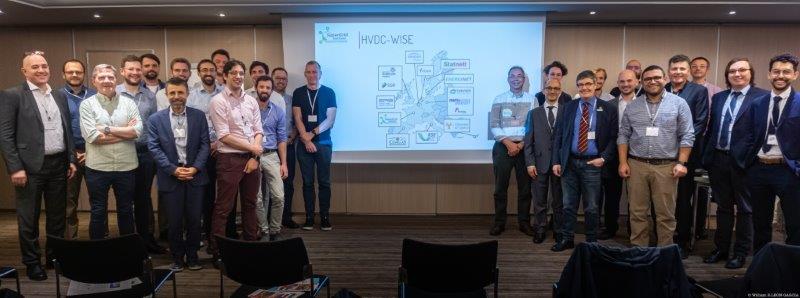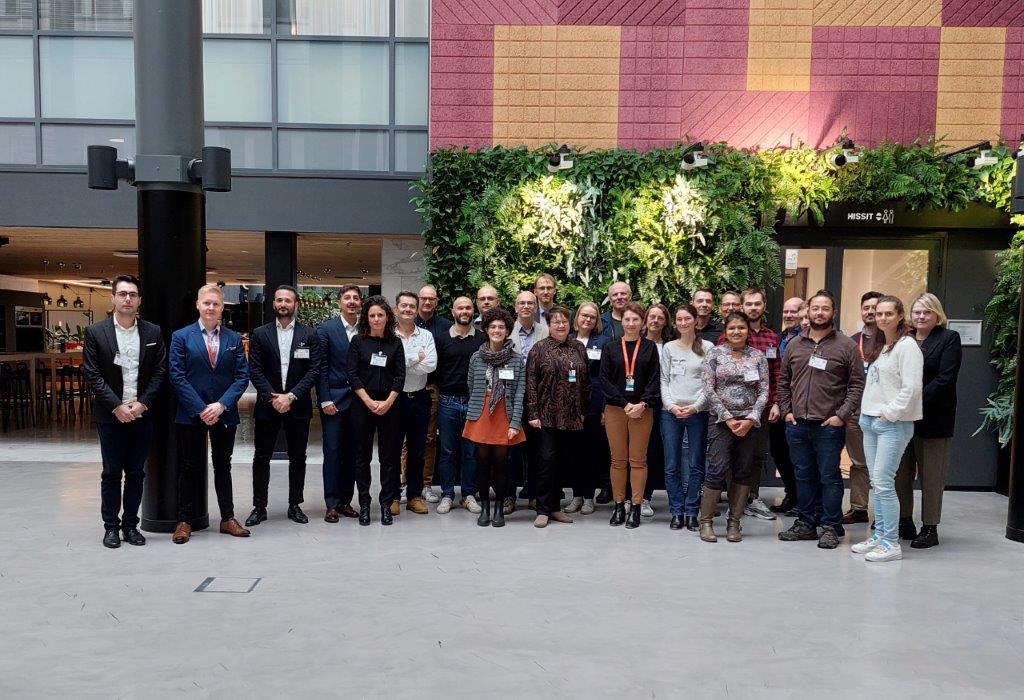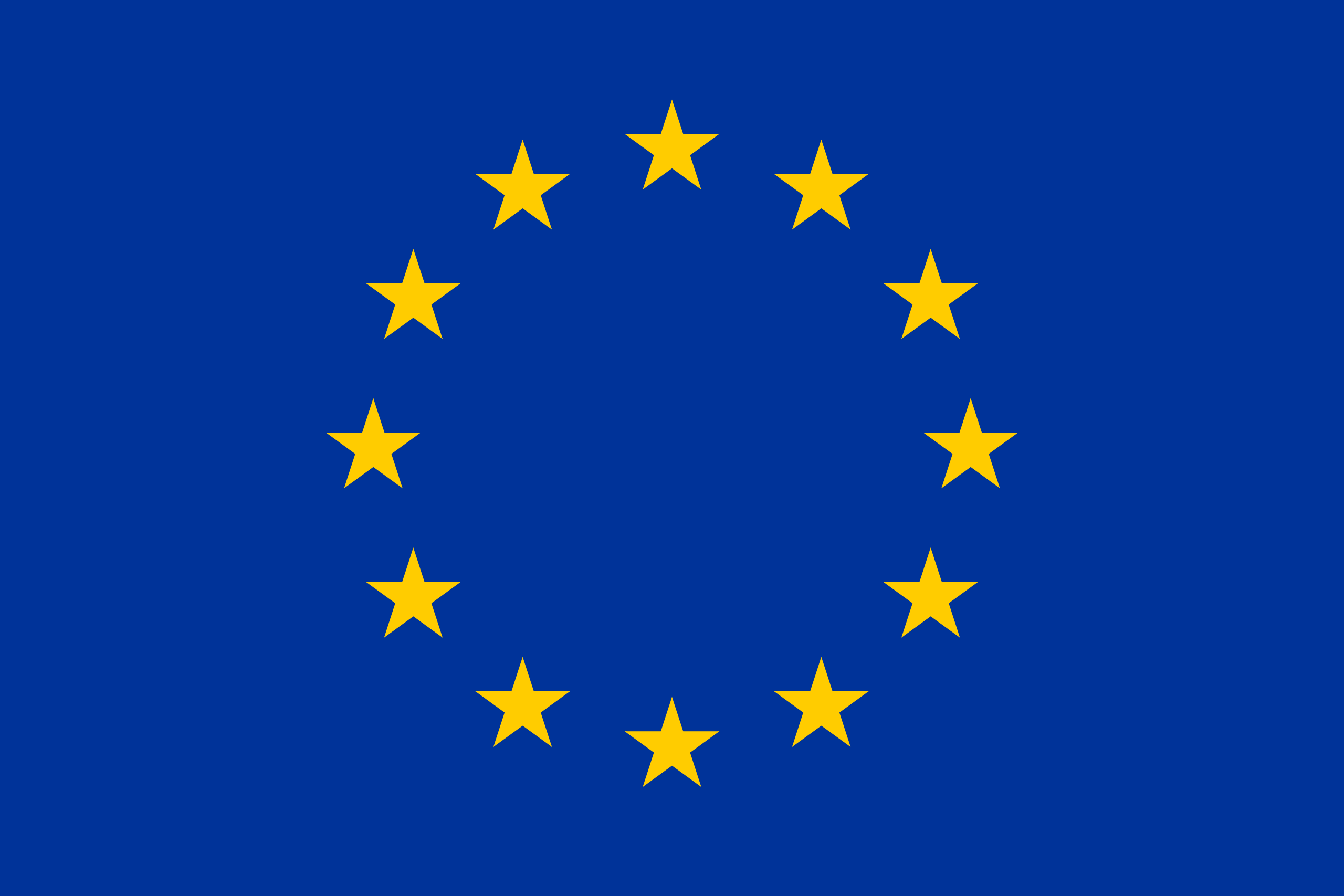Press release: SuperGrid Institute wins 4 new European projects!

SCARLET kick-of meeting on the 28th of September in Potsdam (Germany).

HVDC-WISE kick-off meeting in Lyon on the 10th of October, organised by SuperGrid Institute.

These two days, rich in exchanges, allowed the delegates to get to know each other and begin their work together.
Rising amounts of renewable energy coupled with an increase in decentralised power generation call for European grids to be modernised and expanded significantly. SuperGrid Institute, a research and innovation centre for high and medium voltage direct current technologies for the future power grid, has been extremely successful within the Horizon Europe framework this year, winning 4 project bids it submitted to the European Commission.
The 4 projects started work successively over the last few weeks, each one bringing its own impact to the massive integration of renewable energies into our networks. SuperGrid Institute is coordinator of one the projects. The Institute’s success within the framework serves as proof of the growing recognition of its expertise amongst major international players within the energy sector.
SCARLET – 4,5 years – 15 European partners
>> Download the project press release
The SCARLET project (“Superconducting cables for sustainable energy transition”) unites 15 partners from 7 countries around the goal of designing and industrially manufacturing superconducting cables to enable more efficient and less costly power transmission from renewable electricity generation sites.
The promise of superconducting cables lies in their high efficiency, compact size, and reduced environmental impact. The SCARLET project will make use of these advantages by developing cables that transfer very high power (gigawatt-level) in very small cross sections. The goal is to bring the technology to the last qualification step before commercialisation.
SuperGrid Institute’s contribution
SuperGrid Institute has a strong expertise in superconductors, a brilliant innovation with great potential for use in HVDC grids. Within the SCARLET project, the Institute will be contributing to several work packages, and will notably be leading the one on Electrical system architecture and protection (WP5) and delivering the Resistive Superconducting Fault Current Limiter module demonstrator.
SuperGrid Institute will demonstrate the module in limitation mode in subcooled liquid nitrogen inside the high-voltage size cryostat and will use its high-power test platform to provide the targeted DC fault current under the rated module voltage.
HVDC-WISE – 3,5 years – 14 European partners
>> Download the project press release
The HVDC-Wise project will foster the development of large HVDC-based transmission grid infrastructures to improve the resilience and reliability of existing transmission systems in order to facilitate the integration of forthcoming large amounts of renewable energy.
It aims to achieve these ambitious objectives by developing a toolkit for network expansion planning which will take into account the grid’s performance under extreme conditions and therefore enable system operators to make informed decisions on their HVDC investments. It will also identify different HVDC-based grid architectures that can be readily incorporated into widespread AC/DC system expansion plans.
SuperGrid Institute’s contribution
SuperGrid Institute, a leading expert in DC technologies, is not only the project coordinator but is also leading a work package to identify, assess and model emerging technologies for HVDC-based grid architecture concepts. These concepts are necessary for the deployment of hybrid AC/DC transmission grids.
In addition to these responsibilities, the French Institute for Energy Transition will also lead the activities around control and protection concepts for AC/DC architectures, notably through the validation of these concepts within the realistic test case: “Multipurpose HVDC grid for offshore wind integration and interarea energy trade”. This task will be carried out not only with offline simulations, but also with real-time and Hardware-in-the-Loop experiments using SuperGrid Institute’s test platform.
SuperGrid Institute will also be involved in several other tasks, notably the development of tools for techno-economic analyses and the design of the HVDC systems to be considered in the realistic test cases.
NEWGEN – 4 years – 10 European partners
The NEWGEN project aims to develop new insulation materials, cable manufacturing solutions, online condition monitoring technologies and comprehensive life and reliability modelling tools for the next-generation of extruded HVDC cables and cable systems, thereby improving the reliability and resilience of inter-connected European HVAC/-DC transmission grids.
SuperGrid Institute’s contribution
SuperGrid Institute is involved in each of the project’s 4 technical work packages . The Institute’s main role is to carry out short-term dielectric characterisation of flat material specimens and prototype HVDC cable peelings, to characterise the dielectric properties of type A model cables and to develop an online leakage current measurement sensor for HVDC cables for the detection of pre-fault conditions.
FOR²ENSICS – 4 years – 8 European partners
The aim of this project is to develop and demonstrate a commercial low voltage to medium voltage bidirectional DC/DC converter prototype which can be introduced to the market within a short timescale: less than 3 years. To achieve such an ambitious target, the project team has decided to focus on the development of ultra-high voltage (UHV) SiC-based switching devices which will make it possible to significantly simplify the converter topology and create a very compact design when coupled with high frequency operation. For this purpose, the project aims to design, fabricate and test 15 kV SiC IGBTs modules, as well as series connected SiC MOSFETs.
Another major target of the project is to understand reliability issues affecting different converter components such as UHV switching devices, passive components, and medium frequency transformers associated with high switching frequency and high voltage environments.
SuperGrid Institute’s contribution
The project will start in January 2023. SuperGrid Institute will be participating in 7 of the project’s 8 Work Packages and will lead 2 of them: the work packages on the “Use case and requirements definition” and the “DC/DC Converter Demonstrator”.
SuperGrid Institute will be investigating and supervising the activities related to the converter prototyping and the medium frequency transformer. The converter will act as a test bench for the semiconductor devices and the Medium Frequency Transformer (MFT) will be built in SuperGrid Institute’s premises with help from EPFL. The converter specifications will be defined by SuperGrid Institute and will be as close as possible to those found in the environments of its potential applications.

Each of these projects has received funding from the European Union’s Horizon Europe research and innovation programme.


